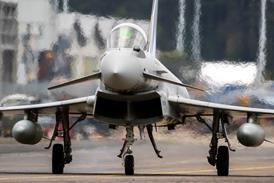MICHAEL PHELAN / LONDON
Part 2 of our annual World Airliners directory focuses on regional aircraft, a market now dominated by two manufacturers, although the Chinese and Russians are pressing on with programmes
The number of players competing for business in the regional sector has long been out of kilter with the size, in dollar terms, of the market. The inevitable re-adjustment has occurred over the past 12 months. Gone are BAE Systems and, in all likelihood, Fairchild Dornier in the fall-out from 11 September, while Raytheon has had to declare defeat in the 19-seat sector and move to a build-to-order status on the 1900D.
Just two major competitors - Bombardier and Embraer - now remain in the 30- to 100-seat market and they are scrambling to fill the void left by the outgoing product lines and make the best of a tough market. China and Russia seem undeterred by the industry's recent woes and continue to push forward with their own ambitious regional jet plans.
There were reasons to cheer in the past year. Embraer launched flight testing of its all-new 70-seat 170 regional jet. Although the schedule has been hampered by slippages that have delayed deliveries by up to six months, the aircraft promises to be the first of an important line-up of new airliners from the Brazilian manufacturer. Meanwhile, Bombardier completed flight testing of its latest CRJ variant, the 90-seat CRJ900, ahead of first deliveries to Mesa early next year.
Sadly the industry's two other new jet types did not make it that far. BAE had three RJX airframes in flight test when it pulled the plug on the programme 12 months ago, citing the economic downturn and the large-scale availability of cheap secondhand aircraft. Although the test aircraft are set for a premature end to their lives either as museum pieces or scrap metal, BAE's portfolio of over 450 secondhand regional aircraft will ensure it remains an important player in the market for some years to come.
The Fairchild Dornier 728 prototype did not even get as far as flight test, with the company's collapse occurring shortly after the 70-seater's roll-out ceremony in Oberpfaffenhofen, Germany, eight months ago. Despite overtures by potential suitors such as Boeing and Bombardier, a credible rescue effort is yet to be mounted and the programme's future is grim.
China and Russia are convinced that their regional jet programmes can succeed where others have failed. Both the Chinese ARJ21 and Sukhoi-led Russian Regional Jet (RRJ) programmes have been given a huge boost in credibility by having Boeing on board in a consultancy role, but how deep the US manufacturer's involvement will become is unclear. General Electric has been chosen to power the ARJ21 programme and Western engine manufacturers are involved in the bids for the RRJ family.
ATR is the sole Western manufacturer remaining in the 40- to 80-seat sector that offers an entire turboprop product line. Major developments in the propeller-driven sector have been largely devoted to establishing freighter conversions for the large in-service fleet of ATR 42/72s, BAe ATPs, Fokker 50s and Saab 340s. Bombardier is also studying a cargo version of the Q400.
Source: Flight International























